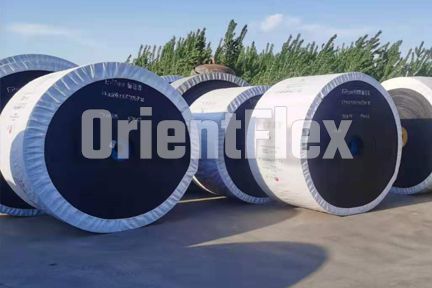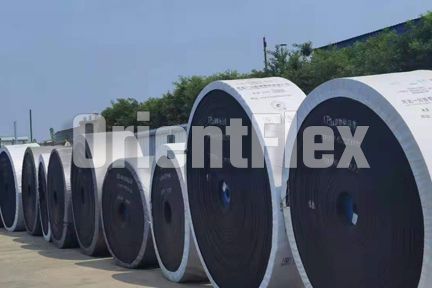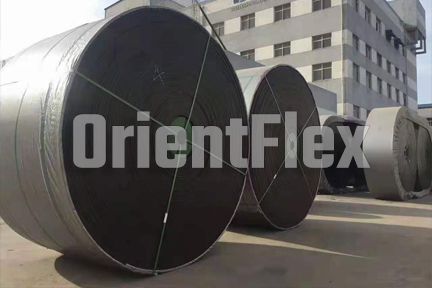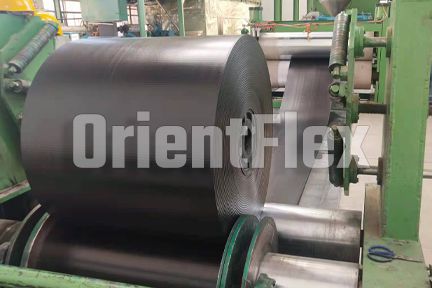- Email orientflex@orientrubber.com
- WhatsApp / Phone+86 180 3186 9514
We all know that the middle layer of is nylon canvas, so the production of bonding is more important. Well, what should be paid attention to when the nylon conveyor belt is bonded?
1. "Wet day is not sticky"
In the summer, when we paste the belt on the site, especially after rain, there will usually be a layer of white fog on the surface of the glue layer after the glue dries. After the glue is done, the glue tends to be poor. Constitute the "wet day does not stick" scene.
This is because in summer, the humidity in the air is very high after raining, and the solvent in the adhesive will absorb a lot of heat from the surface of the rubber layer in the volatilization process, making the water vapor in the air on the surface of the consolidation to form a white fog. The water-based interface formed by the white mist is incompatible with the oily interface formed by the adhesive, and the various chemical forces formed between the two interfaces are very small, indicating that there is no strength in the bonding and bonding discussion.
Failure forms.
To solve these problems, the baking method should be accepted, and the surface water mist should be removed by heating, and the adhesive layer can be bonded until it dries to a sticky feeling.
2. "One side is dry and the other is wet"
When adhesive tape is used, especially in summer when it is difficult to stick with flame retardant adhesive, we often feel that the surface of the adhesive layer has been very stuffy. But it is easy to peel off after bonding, and the adhesive layer is touching the adhesive surface. It is also sticky and constitutes a "wet before dry" scene, not sticky or sticky. This is because the summer climate is high, the solvent volatilization rate in the adhesive is faster than autumn and winter, and after brushing the adhesive surface of the polishing belt, some glue should be immersed in the adhesive tape to form rivets. At the riveting point, the solvent evaporation of this part of the glue is slower than surface evaporation.
In the case of high temperature and boring, the surface is usually dry, and the internal solvent is not completely volatilization, then after the discussion of fit, the internal solvent will also slowly evaporate, the bonding layer will be wetting for a period of time, damage the bonding surface and affect the bonding effect.
In order to eliminate the above effects, we need to apply sufficient opening time or baking before applying the first glue. The saturated solvent of the adhesive in the belt volatilizes, forming the undulating adhesive layer.
3. "Dry too much"
In the course of the glue tape discussion, we accidentally followed the glue process to complete the whole process and then invented the discussion without sticking.
After stripping discussion, the adhesive layer of the invention is not sticky and the surface of the adhesive is very hard. This is in the process of drying or baking products glue, to ensure the complete evaporation of the solvent, adhesive layer completely curing, drying or baking the excessive extension of time, makes the glue solidified completely or almost completely cured, make two adhesive layer on the surface of the adhesive layer and chemical forces between the molecules become very small, and not for discussion.
This requires us to control the appropriate time in drying or baking according to the actual temperature and climate of the site. Make sure the solvent soaked in the tape evaporates, otherwise the adhesive layer is sticky. The glue is dry and dry. Pay attention to the second and third pass. The glue is not sticky and has a sticky feeling.
These are some factors which affect the bonding of nylon conveyor belt.
You can contact or visit us in our office from Monday to Friday from 8:00 - 18:00





